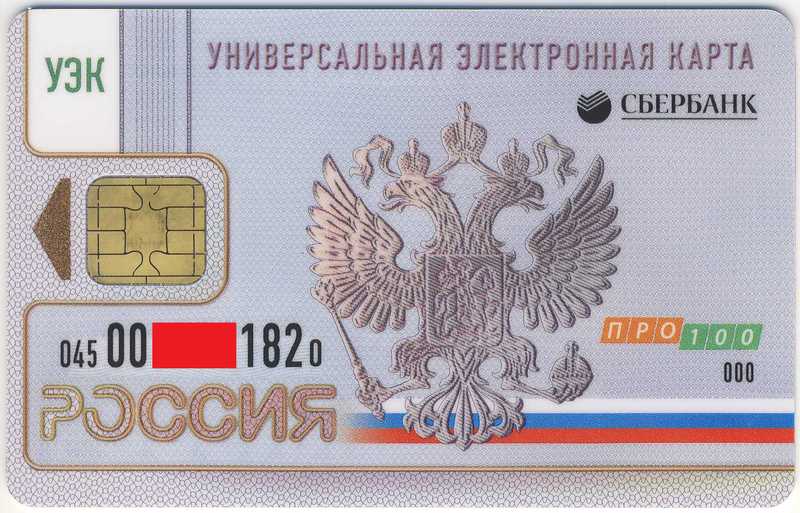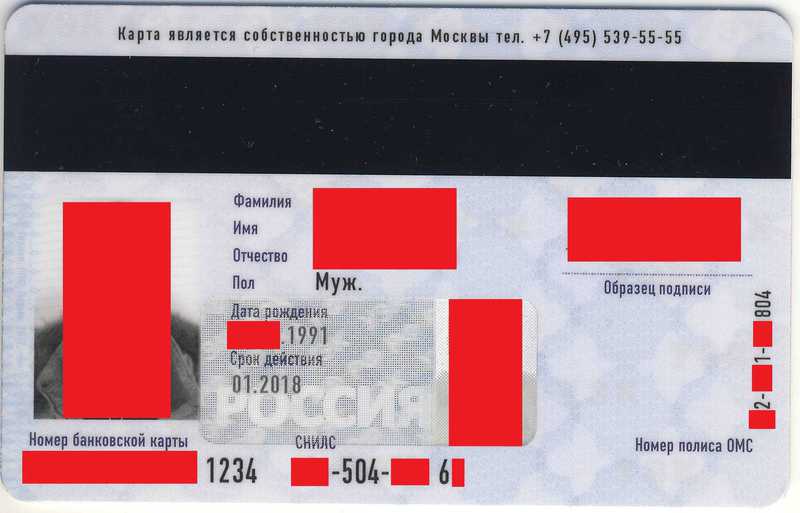How I received a universal electronic card after 3 months of waiting. Part 2

This short post is a continuation of the previous , more comprehensive post about the universal electronic card (UEC).
UPD from 04/29/2013: I bought a card reader and almost got an EDS. Designed a separate topic.
UPD from 05/31/2013 I recorded an electronic signature on the UEC. New features of the card described in the new topic here.
')
Brief background
I made an application for UEC on January 9, 2013, on February 12, they called, they said that they had to wait another month. After a month of waiting, I came to the bank and said there that I had to wait. As a result, on April 4, they called me and said that they could take UEC. On April 5th, I received the UEC.
What does the UEC look like, what functionality and what problems
I am sure that it is worth starting with a good, but good, to be honest very little, so I will describe everything as it was ... I arrived on Friday at Bolshaya Georgian, 37 in the branch of Sberbank, where I ordered the UEC. The electronic queue worked, but 20 minutes after I took the coupon, it turned out that the electronic queue works in all windows except the 3rd — there is a live queue. In the end, after an hour of waiting, scandals of visitors, and other attributes inherent in Sberbank, I received a UEC. By the way, I didn’t take the sheet with me that I was given in January, when I made out the card, and I just gave my passport and they gave me a card without any questions, though I had to write the code word again, although again I said it in January .
The card was not in the envelope, just gave the card and to it an envelope with PIN codes. On the front side of the envelope there is a full name, card number, point of issue of the UEC (it has a numerical designation, I have it 450000000038, which most likely corresponds to the office where they issued the card), as well as the inscription "Envelope: 1 out of 1". Inside the envelope is an insert with 4 PIN codes:
UPD: There is an answer on the Wiki , for which each PIN is responsible. As well as a pdf-file from the site of the UEC of the Moscow region.
ID PIN1: 1234 - used to identify an individual when receiving services
ID PIN2: 123456 - used to digitally sign documents
ID : 12345678 - is used in case of need to change PIN1 or PIN2, and also to unlock them
Bank. PIN: 1234 - used in banking application
(by itself, other PIN codes)
I was immediately told that the envelope contains 4 PINs, but I only need one to use the banking part - “Bank. PIN. It was also said that the card is activated only on a working day, so you need to insert it on an ATM on Monday and request a balance, and the card will be activated. If you do this in the weekend - will give an error. I really came home, went to Sberbank-Online and saw that the card was active. I transferred 8 rubles to the UEC from my other card - it was transferred without problems and I transferred the same 8 rubles to my phone without any problems. The employee said that he does not know what the other 3 PINs are for and what they are for. And no one knows. Very strange, but ok. The only thing that really surprised me was that they offered me and more than once to participate in the lottery, where you can win 5 million rubles, even gave a beautiful piece of paper, and there was no new UEC manual on a completely new product. I was apathetic and tired, so after two of my phrases that you need to earn money yourself and “Trust in God, but don’t make mistakes” have no effect, I just nodded that the information was received in one ear and flew out another.
Front side of UEK
The front side is, in general, a part-time picture of the post itself, however I uploaded a scanned map in high resolution to Dropbox.
In the lower left corner is written the card number, which by the way is not a bank card number, as I thought at the very beginning. This, as I understand it, is exactly the number of the UEC itself. Unfortunately, I don’t know what these numbers mean. It is also not clear what the three zeros in the lower right corner of the map mean. In the upper left corner, where “UEC” is written in large letters, if you peer into two lanes, between which there are 8 lanes, it turns out that the 2 lanes are not solid stripes, but written in small print with the words “universal electronic card”. And those 8 lines are also not lines, but the words "universal electronic card." Of course, the front side of the UEC is not replete with information, but this disadvantage is more than covered by the back side of the card.
UEC back side

( in high resolution )
Here we have the basic information: the bank card number (in the lower left corner) and SNILS (from the bottom in the middle) and the OMS policy number (in the lower right corner). There is also a hologram, where the word "RUSSIA" is horizontally written (without quotes) and "RF" is written throughout the hologram (without quotes). A photograph is also duplicated on a hologram, naturally in a “hologram” form. To the left of the photo, we can barely see vertically written words: “Gosznak, PPF, Perm, 2012,“ B ”
UEC features
Despite the fact that the thickness and length of the card is the same as that of a regular, say, VISA, however, for UEC, plastic is more bending and this makes it seem (or maybe not only think) that the card can be easily broken or bent. In addition, as it turned out, the UEC comes into conflict with the student travel card (VISA ELECTRON from the Bank of Moscow). Probably 4 or 6 times when I put my wallet at the turnstile (metro, bus and trolleybus), he squeaked at me and I had to pull out either the UEC or the social card. So it seems that UEC can also be used as a travel card, but this is not yet precisely known. On Monday, I will call the number at the top of the map and maybe find out something. I have already tried it at an ATM (so far only from Sberbank) - it works. I put money on it through an ATM, then I transferred the money to another card - all without any problems. So it remains to deal with the "travel" part and I think a good thing until 2015, when instead of the UEC will be introduced a card based on the UEC, where there will be a passport and the right. Regarding the pass, as it turned out, there is indeed some information, for example on Wikipedia one of the points is:
75 regions complete testing of the possibility of paying for transport trips using the UEC
As well as in the Russian newspaper it says:
- With its help, it will be possible to receive and pay for state, municipal and commercial services in electronic form, even while abroad. It will be possible to transfer salaries and pensions, pay taxes and fines to this card. It will replace most of the documents, including student and travel tickets, a Muscovite’s social card.
And in Kaluga, UEC has already been used at least 1 time to pay for travel (successfully or not, I do not know). So I think not far off, when in Moscow it will be possible to put money on the UEC, and ride them. The truth is, the question is that if you need to approach the transport kiosk the same way as you do now and give the card along with the money, this is not very convenient. I would like to see it as podkoshelki in the personal account of the same Sberbank - there is a main account from which you can withdraw money, pay for purchases, etc., and there is a calculation like "Transport", etc. and from the main account there you can transfer money in one direction, and you will have X trips for this money.
The truth is again starting to look for information on the UEC on the Internet, it comes across and this .
As a result, I can say that I really do not need the UEC for the time being, but even more so with the service from Sberbank. It is possible with the introduction of the transport block into the card, or rather its activation, the UEC will make sense, because giving the card and money in the transport kiosk (or even from home through online banking) it is more convenient to put money on the UEC than to stand in lines at the subway / kiosks . By the way, from one person, I learned that in the registry offices there will also be something related to the UEC - there is already unopened equipment (tripod and camera).
UPD: And here is a list of supported card readers.
UPD2: More UEC Specifications from the Ministry of Communications of the Russian Federation. True to 2011.
Very interested in this :
* unlike a bank card, the universal electronic card is protected in a special way. Both hardware and software protection are built into the card, which are under the careful control of the state; in order to apply a card (except for micropayments on transport), it is required to enter a personal identification number. If a citizen is forced to enter it, then false PIN numbers are provided, which will allow to gain time and provide prompt assistance to the citizen from the security forces;
Considering that the last times, when I called 112, I waited for someone to pick up the phone, once 20 minutes + 30 minutes until the police arrived (then like the police), I see this as a great opportunity - they are trying to rob you, there is no money, but there is a nearby ATM and there is money on the card, 3 times wrong, or you enter a false one, the ATM starts to count money, “breaks down” or something else, and by that time the RRT (rapid response team) arrives. Of course, all this is humor, but unfortunately a little black.
UPD4: The 3 digits in the lower right corner on the front side are the electronic card authentication code.
UPD5: List of banks of card issuers, as well as participating banks.
UPD6: The EDS on the card is qualified. Proof 1 and Proof 2 (p. 15).
UPD7: List of supported readers.
UPD8: Guidelines for the use of a digital signature certificate for UEC.
UPD9: While in the office of Sberbank on Bolshaya Gruzinskaya (in Moscow), EDS is not recorded on the card. Details here .
UPD10: A man successfully recorded a digital signature on the UEC, but some information was needed. Important!
Source: https://habr.com/ru/post/175741/
All Articles